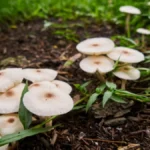Learn the craft of growing pumpkins with our knowledgeable guide! Discover how to grow pumpkins with ease, from sowing seeds to harvesting, and transform your yard into a pumpkin haven.
Here’s a comprehensive how to grow pumpkins in containers at home:
- Selecting the Appropriate Container:
- Size: Choose a container with a minimum capacity of 15 gallons so that the roots of the pumpkin plant have enough room to spread.
- Depth: In order to allow for the deep root system of pumpkin plants, make sure the depth is at least 18 inches.
- Drainage: To avoid waterlogging, make sure the container has enough drainage by drilling holes in the bottom.
- Choosing the Correct Type of Pumpkin:
- Container-Favorite Types: Compact or bush varieties that are good for growing in containers include “Small Sugar,” “Baby Boo,” and “Jack Be Little.”
- Think About Space: Choose a variety that fits the size of your container because some varieties require more room.
- Soil and Planting:
- Soil Mix: Use an organic-rich, well-draining potting mix. For extra nutrients, combine aged manure or compost.
- Planting Seeds: Plant two to three pumpkin seeds in the center of the container, about an inch deep. After sprouting, select the healthiest seedling to keep.
- Spacing: If you are planting more than one seed, make sure they are at least 18 to 24 inches apart.

- hydration and sunlight:
- Hydrating: Don’t overwater the soil; instead, keep it continuously damp. In between waterings, let the soil dry out a little bit. Water deeply.
- Sunlight: For best growth, place your container in an area that receives at least 6 to 8 hours of sunlight per day.
- Upkeep and Cure:
- Support: As the vines grow, place a trellis or other support structure next to the container. Better airflow and the avoidance of rot can be achieved by gradually training the vines to climb the support.
- Fertilisation: Every two to three weeks, apply a liquid fertiliser diluted to half strength or a balanced, slow-release fertiliser.
- Pruning: To focus the plant’s energy on the main pumpkin, remove any extra foliage and tiny fruits.
- Control of Pests and Diseases:
- Pests: Frequently check for pests such as cucumber beetles, squash bugs and aphids. Apply neem oil or organic insecticidal soap for control.
- Diseases: Pumpkins may be impacted by powdery mildew. Make sure the plant has adequate airflow, and apply fungicides if necessary.
- Harvesting:
- Timeline: Depending on the cultivar, pumpkins can reach maturity in 75–100 days.
- Mature Signs: A hard rind, dried stem, and a rich, uniform colour are indicators of maturity. When you tap the pumpkin, it should sound hollow.
- Harvesting: Cut the pumpkin from the vine with pruning shears, leaving a few inches of stem attached.
Conclusion:
Pumpkins grown in containers need careful attention to detail when it comes to soil composition, irrigation, sunlight exposure, and insect management. Even in a little space, you may have the satisfying pleasure of picking your own pumpkins at home with the correct upkeep and care.
A frequently asked question:
Q1: How deep should I sow the seeds for a pumpkin?
A1: Sow pumpkin seeds in soil that drains properly, about 1 to 1.5 inches deep.
Q2: What time of year is ideal for growing pumpkins?
A2: When the soil has warmed to at least 60°F (15°C), which is after your area’s last frost date, plant pumpkins.
Q3: How do I grow pumpkins from seeds in Minecraft?
A1: In Minecraft, you can plant pumpkin seeds by tilling a portion of farmland and then placing the seeds on the tilled soil. Make sure the space is hydrated and well-lit.
Q4: What is the best fertilizer kind for plants that grow pumpkins?
A4: Apply fertilizer that is evenly distributed in terms of nitrogen, phosphorus, and potassium. For pumpkins, a 10-10-10 or comparable ratio works well.


